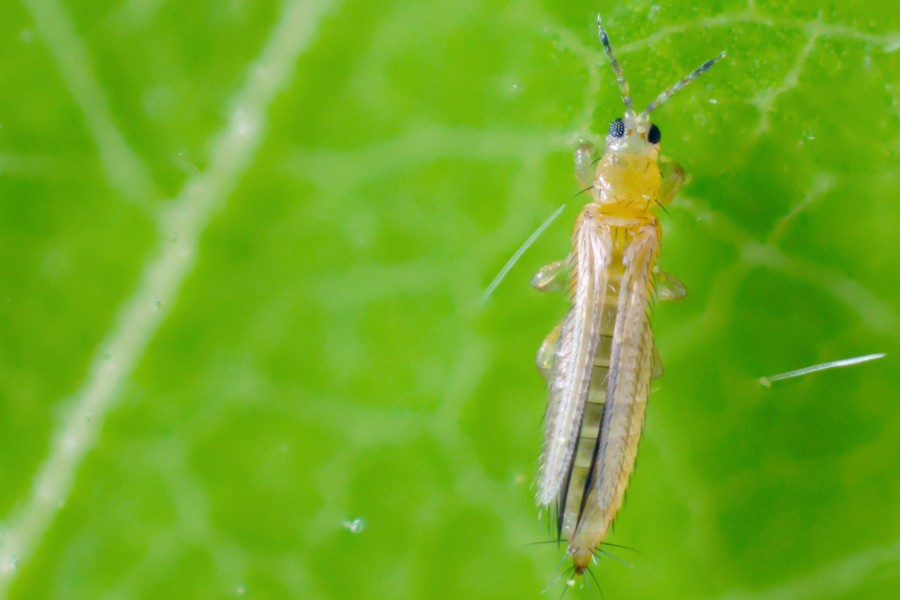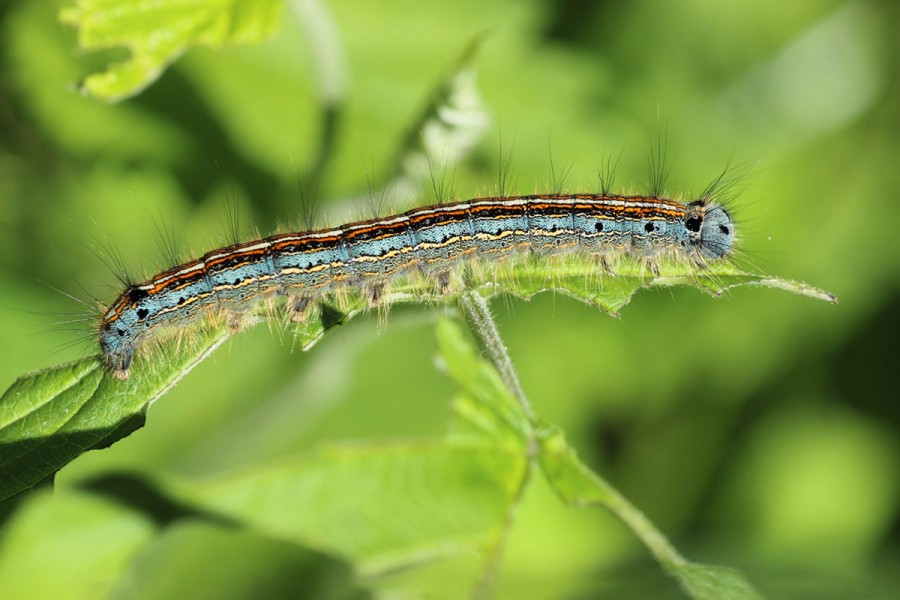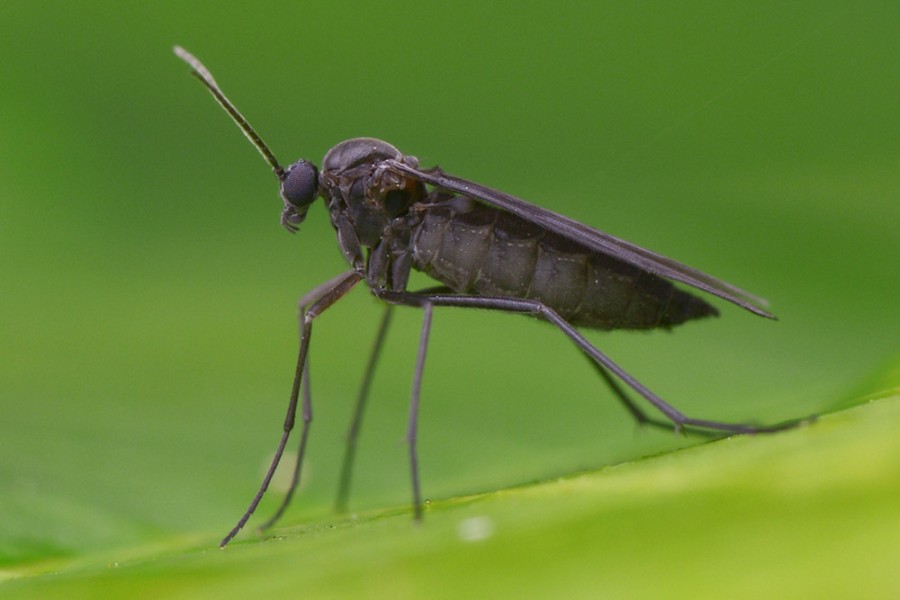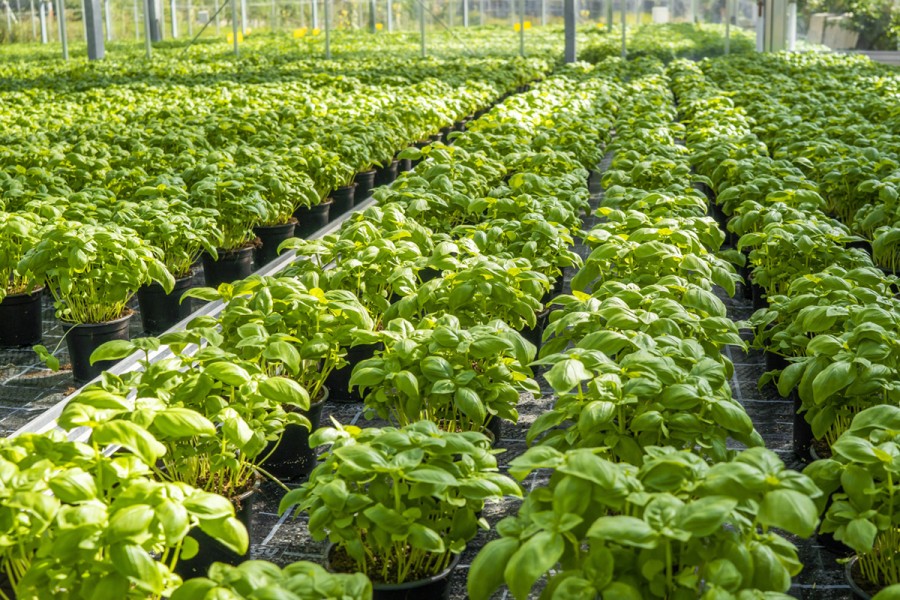Nematodes for
CONTROL PESTS IN HERBS AND VEGETABLE CULTIVATION WITH NEMATODES
Numerous pests in professional vegetable and herb cultivation can be effectively controlled with nematodes. These include, for example, various caterpillars, fungus gnats and thrips.
CONTROL THRIPS WITH NEMATODES
California flower thrips (Frankliniella occidentalis) is one of the most dangerous greenhouse pests. It attacks almost all greenhouse plants and is particularly problematic in cucumbers, zucchini and peppers. Direct damage is caused by sucking activity and resulting deformations, and indirect damage is caused by the spread of viruses.
For pupation, 95% of the penultimate nymphal stage (commonly referred to as the prepupa) migrates to a soil depth of 1.5 - 2 cm. The presence of predatory beneficial insects active above ground increases the proportion of prepupae migrating into the soil. Thrips spend 1/3 of their development in the soil.
This is also where the nematodes come into play. Our product nemaplus® contains nematodes of the species Steinernema feltiae, which among other things is specialized in the control of thrips. 125,000 - 250,000 nematodes are applied per m² with at least 100 ml of water. The application is done by drip irrigation or with a foliar application without wetting agent, so that the drops can roll off the leaves. The nematodes attack the thrips present in the soil, but hardly reproduce in them, so this application must be repeated every 10 days, because new thrips are constantly migrating into the soil.
Contact

CONTROL CATERPILLARS WITH NEMATODES
Caterpillars feed on the above-ground parts of plants, causing great damage. With our nematode product nemastar® these can be controlled effectively and sustainably. Depending on the species, the caterpillars develop several generations per year, which is why nemastar® should be applied every 10-14 days or 4-5 times per season. The application rate is 125,000 - 250,000 nematodes per m² or 1 million nematodes per liter of spray broth. Ideally, spray the plants until just before dripping. Air temperatures should be above 14°C during the day.

CONTROL FUNGUS GNATS IN GREENHOUSES WITH NEMATODES
The larvae of the fungus gnat (Lycoriella spp., Bradysia spp.) are an important pest in professional herb cultivation. These soil-dwelling, approximately 5 mm long, glassy-white larvae feed on the roots of seedlings, cuttings, and young plants, hollowing them out and creating entry points for rot bacteria and soil-borne fungi.
The adult mosquitoes, about 2 to 4 mm in size, are diurnal and easily identified by their two long antennae and sluggish, lurching flight. A mosquito lives 3 to 7 days, during which time it lays up to 40 eggs in moist soil, peat, or decomposing plant material. The development from egg to mosquito takes about 3 weeks under optimal conditions (24 °C).
nemaplus® against fungus gnats
As an ideal control agent, nemaplus® has proven itself for years. It contains nematodes of the species Steinernema feltiae.

Application of nemaplus®
Soil temperatures should be 8 to 28 °C. At higher temperatures, the effect of the nematodes decreases. Treat as early as possible after sowing or planting cuttings. One treatment usually provides protection for 6 weeks. Substrate should be moist but not wet. Nematodes cannot swim and therefore cannot move in waterlogged substrate. Since nematodes are sensitive to direct sunlight, apply nemaplus® under overcast skies or in the evening or morning hours!
Application rates of nemaplus®
0.5 million nematodes per m² or 5,000 nematodes per liter of peat substrate. In case of heavy infestation, susceptible plants or high compost content in the substrate, increase the application rate to 1 million per m² or 10,000 nematodes per liter of substrate. Overdosage has no adverse effects. Water application rate: 10-50 liters per 100 m². If possible, suspend irrigation once before treatment so that the substrate does not become too moist.

DOWNLOADS
Nematodes of the species Steinernema feltiae against fungus gnats (Bradysia spp.)
Nematodes of the species Steinernema carpocapsae against leatherjackets (Tipula paludosa), Mole crickets (Gryllotalpa gryllotalpa) und cutworms.
product sheet nemastar® Capnodis
poduct sheet nemastar® Leatherjacket
